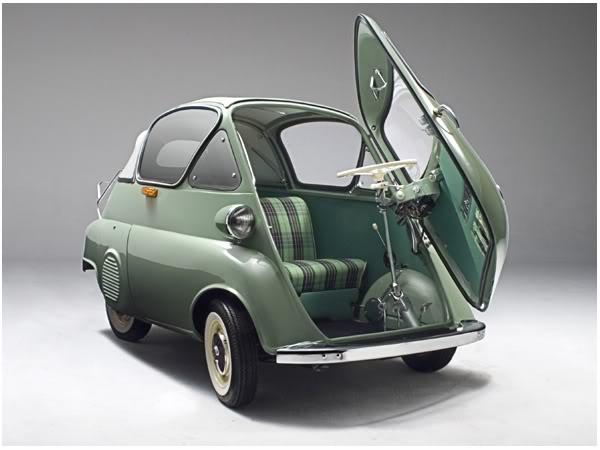In the annals of automotive history, there are vehicles that have left an indelible mark, not just for their performance or luxury, but for their sheer innovation and quirkiness. Among these stands the BMW Isetta, a diminutive yet iconic microcar that emerged in post-war Europe to redefine urban mobility and capture the imagination of generations to come.
Birth of a Microcar Revolution
The BMW Isetta was not conceived in the halls of a traditional automobile manufacturer. Instead, it originated from an Italian firm, Iso SpA, renowned for refrigerators, motor scooters, and small utility vehicles. In 1953, Iso engineer Ermenegildo Preti designed the Isetta as an economical transportation solution for war-ravaged Europe. Its compact dimensions and unconventional front-opening door marked a departure from conventional automotive design, embodying the essence of innovation born from necessity.
BMW Adopts the Isetta
In 1954, BMW, seeking to diversify its product line, acquired the license to manufacture the Isetta. Renowned for their luxury sedans and motorcycles, BMW’s foray into microcar production raised eyebrows initially. However, it turned out to be a stroke of genius, aligning perfectly with the changing needs of urban commuters amidst Europe’s post-war reconstruction.
Design and Engineering Marvel
What set the Isetta apart was its unconventional design. With a single front door, hinged to the steering column, ingress and egress were uniquely facilitated. This front door also doubled as the car’s steering wheel, simplifying construction and reducing costs. Its bubble-like shape and compact dimensions made it perfect for navigating narrow city streets and squeezing into tight parking spots.
Under the hood lay a modest engine, initially a 250cc single-cylinder motorbike engine. Later versions boasted larger engines, including a 300cc and even a 600cc twin-cylinder engine, enhancing performance without sacrificing fuel efficiency. The Isetta’s simple mechanical layout made it easy to maintain, a crucial factor for budget-conscious owners.
BMW Isetta; Cultural Phenomenon
The BMW Isetta quickly captured the public’s imagination, transcending its utilitarian purpose to become a cultural icon. Its distinctive appearance and quirky charm made it a favorite subject in films, television shows, and advertisements. From bustling cityscapes to quaint villages, the Isetta became synonymous with urban mobility, representing a shift towards practicality and efficiency.
Economic Impact
In the wake of World War II, Europe faced economic challenges that demanded innovative solutions. The BMW Isetta emerged as a beacon of hope, offering affordable transportation to millions of families across the continent. Its low price and frugal fuel consumption made car ownership accessible to a wider demographic, catalyzing social mobility and economic growth.
Global Success of the BMW Isetta
While initially targeted at European markets, the BMW Isetta’s popularity soon transcended geographical boundaries. Exported to countries around the world, it found eager buyers in North America, South America, and Asia. Its adaptability to diverse environments and cultures cemented its status as a global phenomenon, earning it a place in the pantheon of automotive legends.
Enduring Legacy
Despite its production ceasing in the early 1960s, the BMW Isetta’s legacy endures to this day. Enthusiast clubs and collectors worldwide keep the spirit of the Isetta alive, preserving and restoring these diminutive classics for future generations to enjoy. Its influence can be seen in modern microcars and electric city vehicles, carrying forward the legacy of innovation and practicality that defined the original Isetta.
The BMW Isetta stands as a testament to the power of innovation in the face of adversity. Born from the ashes of war, it symbolizes resilience, ingenuity, and the human spirit’s capacity to thrive amidst challenges. More than just a car, the Isetta represents a microcosm of societal transformation, where necessity breeds invention, and simplicity reigns supreme. As we navigate an increasingly complex world, the lessons of the Isetta remind us that sometimes, the most revolutionary ideas come in the smallest packages.
Discover other classics.
